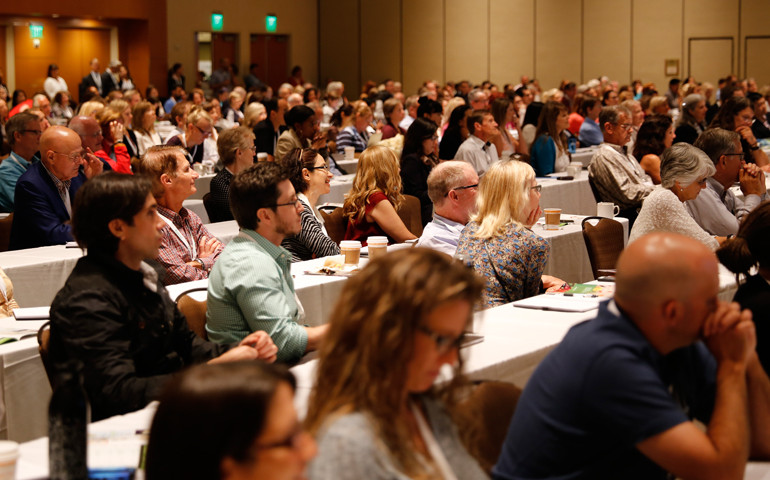GST provides SEZ investment opportunities – FII News
Tax exemption for import of raw materials.
Though the 2011 imposition of Minimum Alternative Tax (MAT) had slowed down growth of special economic zones (SEZs), the implementation of Goods and Service Tax (GST) provides good investment opportunities in Indian SEZs, a top Commerce Ministry official said at an ASSOCHAM event held in New Delhi on 26 July 2017.
“After 2011, today again probably is the right moment to make investments in the SEZs, as it is the only scheme of the many export promotion schemes operating in India, wherein ab initio exemption has been provided from customs duty as well as IGST (Integrated Goods and Service Tax),” said Dr L.B. Singhal, development commissioner, Noida SEZ.
He also said that this exemption has been provided both for import as well as domestic procurement of the raw materials, capital goods and others.
“So, this being the only export promotion scheme, this is a real major incentive for making an investment for manufacturing and services in the SEZs,” added Dr Singhal who manages 27 SEZs in Northern India which employ over 81,000 people.
Earlier, he had said that after enacting SEZ Act in 2005, up to 2011 it really grew up very well by almost 100 per cent every year but in 2011, the Indian Government imposed MAT, which slowed down the growth.
“The SEZ Act had provided income tax exemption for 15 years – with 100 per cent income tax exemption in first five years and 50 per cent exemption in next five years. But when the MAT was imposed, the investor felt that the kind of incentive, which was promised to them, that was taken back,” said Dr Singhal.
Citing other favourable reasons for growth of SEZs in India, he said that the SEZ Act provides income tax exemption on profit on exports for 15 years to the SEZ units but now a sunset clause has been laid that this income tax exemption will be available only on the SEZ units which start operating by March 2020.
“With GST exemption together with exemption in the income tax and in case you are able to make investments and are able to make your SEZ unit operational by March 2020, then you will get the complete income tax exemption for 15 years which is envisaged in the SEZ Act,” he elaborated.
He also said that the Government has considerably addressed the issue related to MAT.
“The major issue was coming that MAT is kind of an advance income tax which you can offset in future liabilities. Earlier the time period given for setting MAT offset was seven years, now two years back that period has been changed to 12 years so for MAT liability also you get longer period for adjustment.”
The SEZ scheme, the benefits which were provided under Foreign Trade Policy under various export promotion schemes like focus product scheme, focus market scheme and others have now all been merged into MEIS (Merchandise Exports from India Scheme).
“These benefits are now also available for exports from SEZs – benefits from MEIS as well as services exporters are also entitled for the benefit of Service Exports from India Scheme (SEIS),” said Dr Singhal.
“These reasons, put together, make it an attractive proposition for making investment in the SEZs.”
The package, which is provided for SEZs in India, is quite comprehensive as one gets benefit of indirect exemptions on raw material together with indirect exemptions on capital goods, besides one also gets exemptions from taxes even for setting up unit of cement, steel and others.
Referring to the steps taken by the Government to expand the scope of SEZs, he said “Earlier area requirement for setting up a multi-product SEZ was 1,000 hectares which has been reduced to 500 hectares, for sector-specific it has been reduced to 100 hectares. For IT (information technology) sector, which was earlier 10 hectares, has now been completely done away with and what you require is only 1 lakh sq. meter built-up space.”
The government intends to promote investment in the tier-II, III cities, so the minimum area requirement for tier II cities is 50,000 sq meters while for tier III cities it is just 25,000 sq meters.
Highlighting that results of these steps can be seen, he said that in the last 2-3 years, IT sector SEZs have come up in Chandigarh (employing 12,000 people), Lucknow, Indore and other such cities.
He also said that Government support is not merely limited to fiscal incentives but it includes providing ease of doing operation, single window clearance.
“There are two tier single window approvals in place in SEZs – one apex in the Commerce Ministry at the Board Approval level chaired by Commerce Secretary with representatives from all ministries. So, the approval for setting up SEZ is given by the board itself and no approval from any other separate ministry is required,” said Dr Singhal.
“Once the SEZ is approved and you go for setting up the unit in the SEZ, there is an approval committee meeting in every SEZ chaired by the Development Commissioner wherein the representatives of customs, central excise, DGFT (Director General of Foreign Trade), income tax, state government all are present at one place and approval is given at one place,” he explained.
Exports from SEZs in India, which were a meagre US$2 billion in 2000 and reached US$5 billion in 2005, had touched a massive US$81 billion last year.
SEZ investments is worth Rs.4.23 lakh crore today, up from about Rs. 4,000 crore in 2005.
Today, direct employment in the SEZs stands at 17.31 lakh, up from about 1.43 lakh in 2005.
This article was first published in fii-news.com
















No Comment